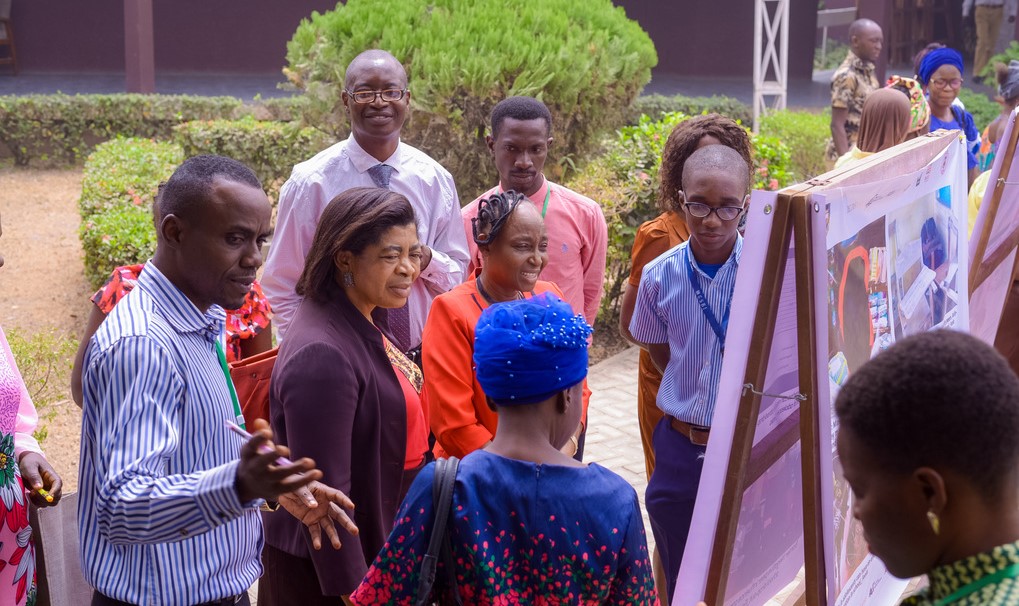 Around 1.2 billion people, or 1 in 6 of the world's population, are adolescents aged 10-to-19. Most are healthy, but there is still substantial premature death, illness, and injury among adolescents. Illnesses can hinder their ability to grow and develop to their full potential. Alcohol or tobacco use, lack of physical activity, unprotected sex and exposure to violence can jeopardise not only their current health, but also their health as adults, and even the health of their future children.
Around 1.2 billion people, or 1 in 6 of the world's population, are adolescents aged 10-to-19. Most are healthy, but there is still substantial premature death, illness, and injury among adolescents. Illnesses can hinder their ability to grow and develop to their full potential. Alcohol or tobacco use, lack of physical activity, unprotected sex and exposure to violence can jeopardise not only their current health, but also their health as adults, and even the health of their future children.
Dr Adesola Oluwafunmilola Olumide is a Senior Medical Research Fellow and Consultant Physician at the Institute of Child Health, University of Ibadan and University College Hospital, Ibadan, Nigeria. Her project was supported by the DELTAS Africa Community and Public Engagement (CPE) Seed Fund.
In this article, Adesola discusses how secondary school enrolment can be protective against adolescent engagement in health-risk behaviours such as cigarette smoking and unsafe sexual practices.
Gown and Town: Synergy for enhanced societal impact
Adolescence is a time of immense opportunity. Is also a time when some individuals start engaging in health-risk behaviors such as smoking, drinking alcohol and unsafe sexual practices. Studies we conducted in Oyo state, Nigeria, revealed that these risky behaviors are more common among older adolescents who are not enrolled in senior secondary school. In Oyo state, more than half (53%) of adolescents who should be in senior secondary school are not in school; even though education is currently free from primary to senior secondary school. These adolescents who are out of school are exposed to the likelihood of engaging in unhealthy practices.
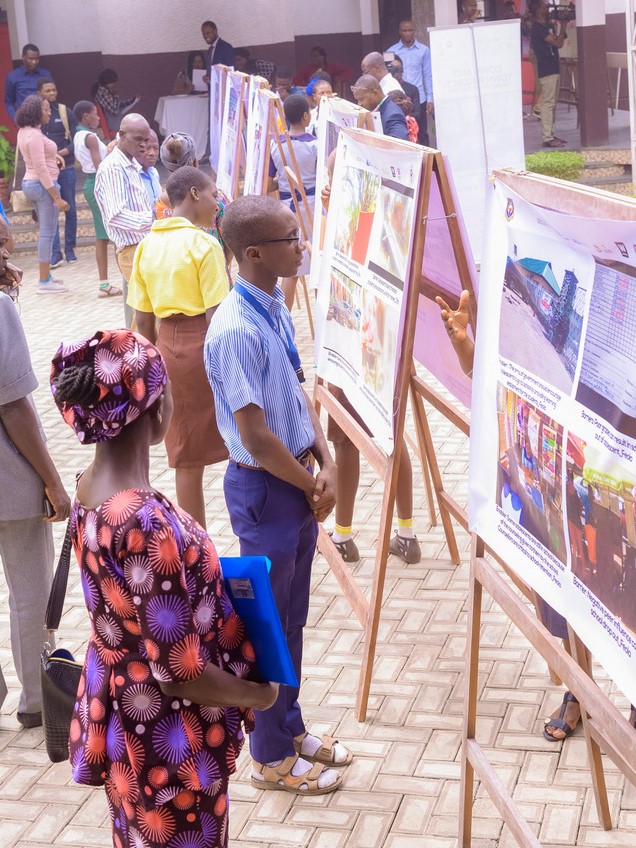
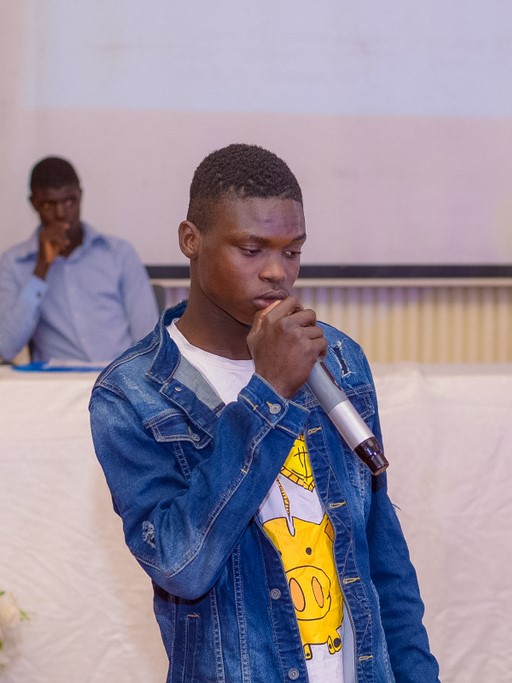
Participants at the photo exhibition; an adolescent sharing his experiences
I wanted to find out what promotes or hinders secondary school enrolment and retention, to use the information to create a wider community dialogue with stakeholders to raise awareness and to resolve the issue.
In academia, we often use the phrase "gown to town”: i.e. the university community taking research findings or knowledge to the public. For this engagement, the emphasis was on gown and town: a mutually beneficial relationship whereby the gown worked with the town to understand issues and together achieve a bigger and more sustainable solution to a public health issue.
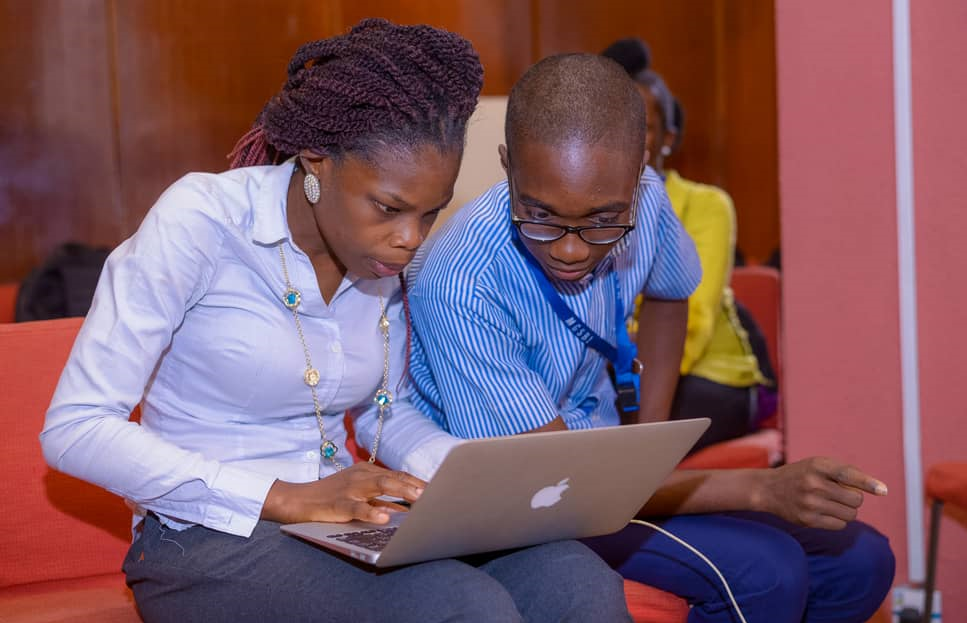
The project manager working with one of the adolescents to prepare for his presentation
I worked with adolescents who had dropped out of secondary school and those who were attending secondary school, because they are the ones who we need to keep in school. We need to hear their stories to understand what led them to dropping out and prevent further dropout rates, as continuing their education is beneficial for their health and wellbeing.
Hearing from adolescents about staying in school
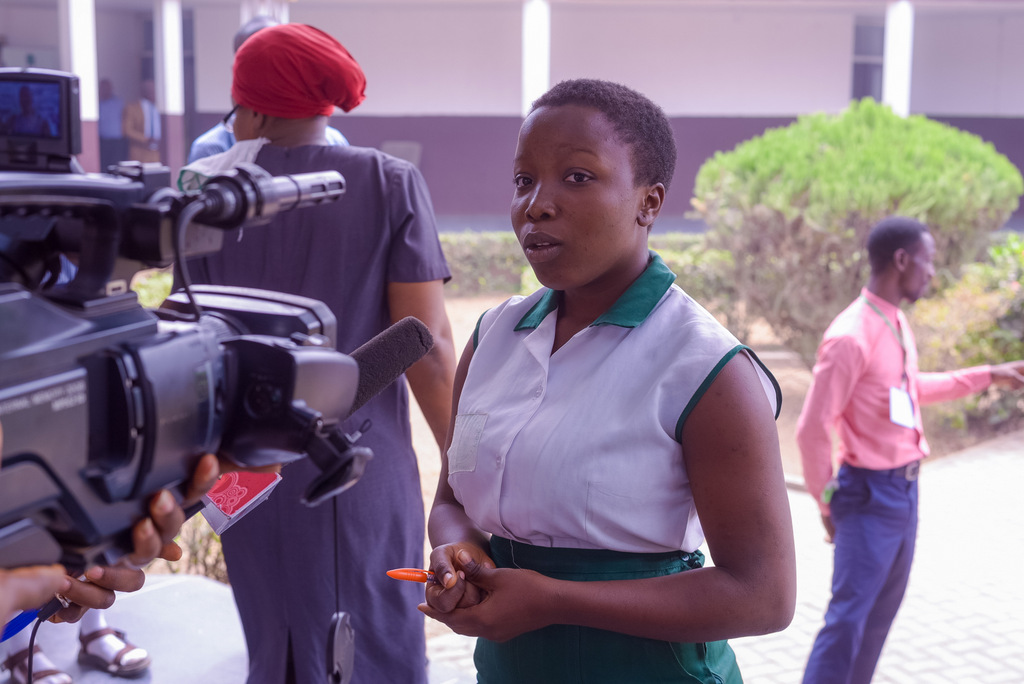
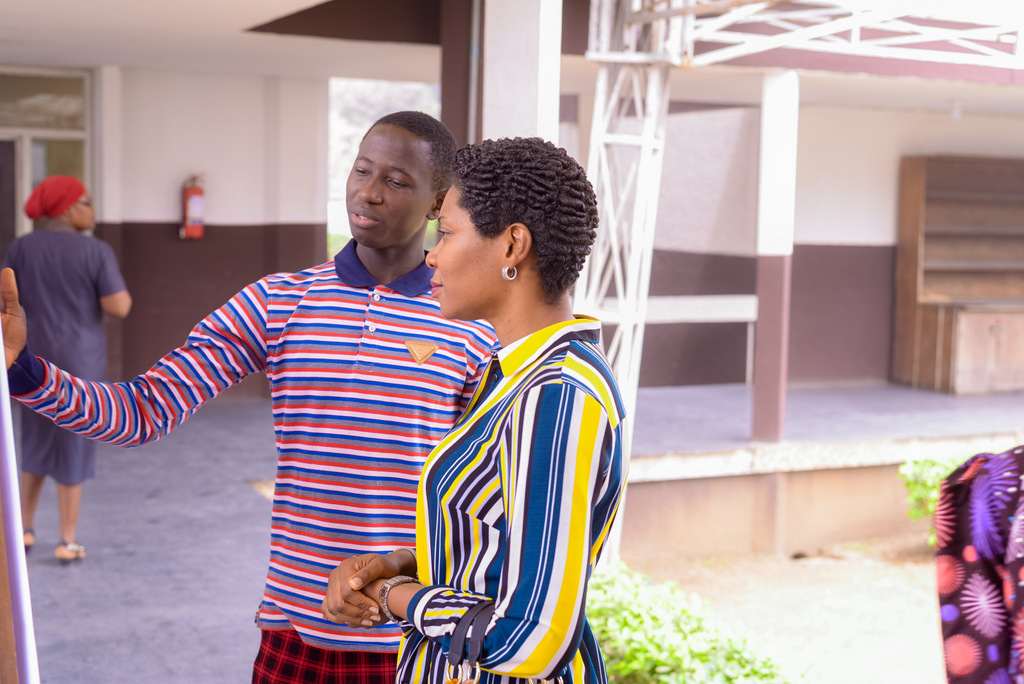
I asked the adolescents to take photographs of things and activities within their communities that they thought promoted or hindered senior secondary school enrolment. They could select up to 10 photos that they would then discuss in groups. Afterwards, we used a selection of these photos to create posters for a photo exhibition at a meeting with teachers, adolescents, parents, community members, school owners, and used the images to design information and engagement cards.
Teachers’ perspectives on retention
My team and I collected thoughts from teachers to balance them with the views of the adolescents. The teachers drew maps of their immediate community and included issues and resources that they considered to promote or hinder senior secondary school enrolment and retention. The community resource maps drawn were converted into posters and presented at a stakeholders’ meeting.
Project Outputs
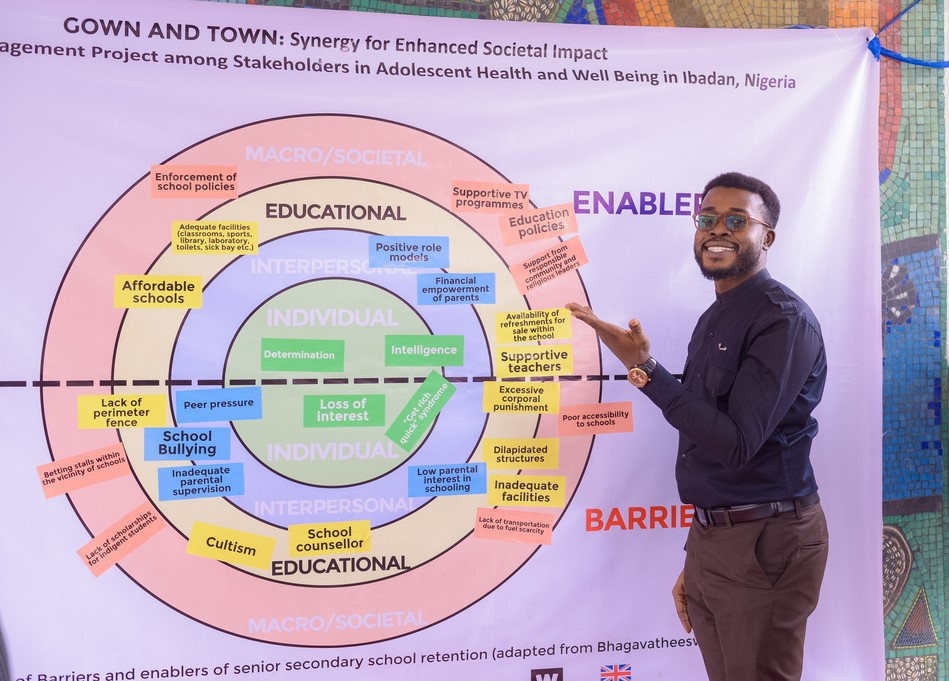

Presenting the barriers and enablers of school retention
We hosted a poster exhibition targeting senior secondary school students and teachers. The posters depicted relevant data from previous studies conducted among adolescents within the study environment. Teachers and secondary school students reviewed the posters, discussed them and provided additional insights.
We then created a project research brief, two documentaries and brief video interviews. The video has been posted on the website of the Society for Adolescent and Young People’s Health in Nigeria and to reach a wider audience including those who did not attend the programme.
Engaging change-makers and broadening the discussion

All that I had learnt from the adolescents and teachers was presented and discussed at a meeting themed ‘Education is a Vaccine’ with a wide range of stakeholders, including State Ministry of Education ministers, school principals, officials of the association of school proprietors, officials of the All Nigeria Conference of Principals of Secondary Schools (ANCOPSS), members of the Oyo state innovation hub, parents, media representatives, teachers, school counsellors and researchers. This stakeholders’ forum was a great opportunity for them to see and hear from the adolescents to learn about feasible interventions they can implement to address senior secondary school dropouts and bring about change.
Since then, I have presented the project brief, the materials we produced and the results at the Second Nigerian and First African Conference on Adolescent and Youth Health and Development in Abuja, Nigeria.
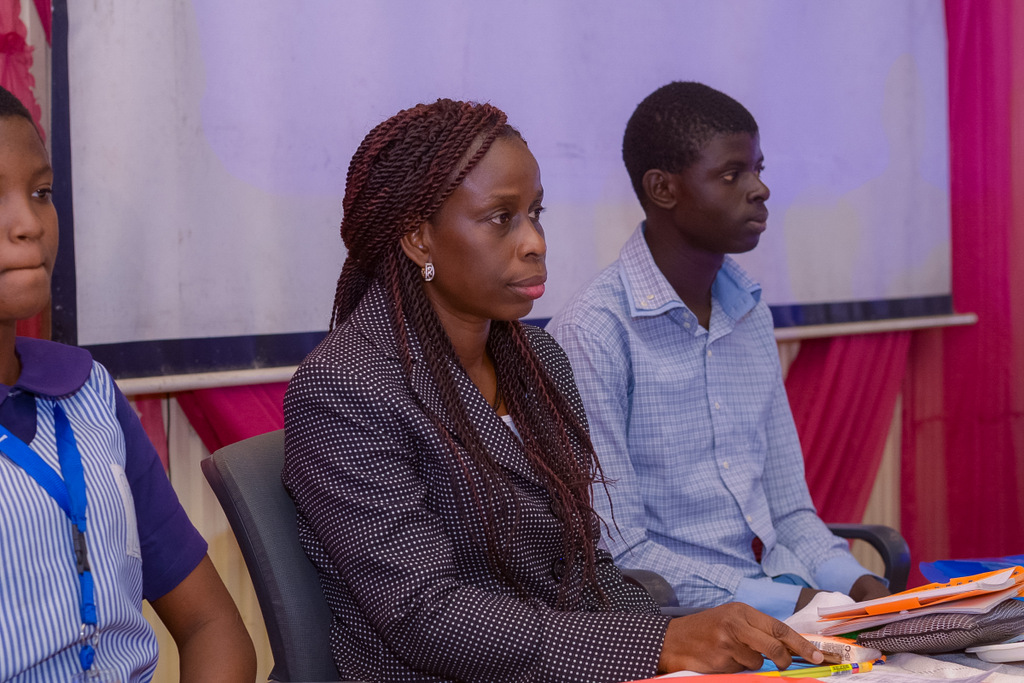
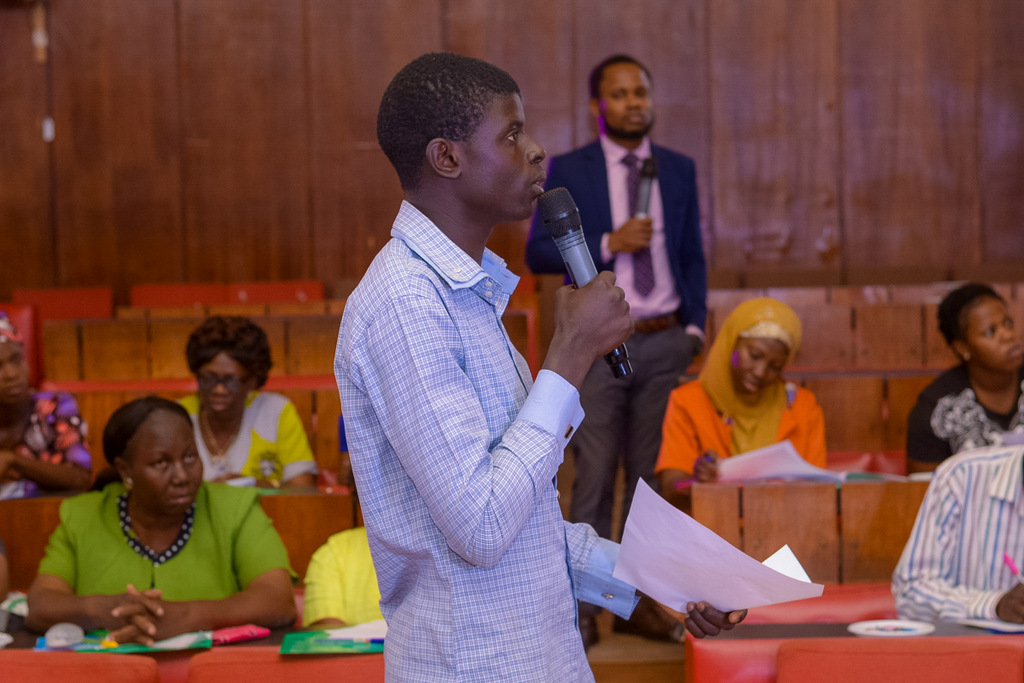
Adesola with participants at the 'Education is a Vaccine' meeting, an adolescent having his voice heard by stakeholders
Empowering all parties
Engagement of my research was previously limited to sharing results with stakeholders and having a discussion with them around my research findings. My CPE grant challenged me to use more participatory methods for engaging with the community. I was particularly delighted that the adolescents did a marvellous job of presenting their thoughts to stakeholders using the pictures they took at the photo exhibition. I see community engagement as a win-win for everybody, for the researchers and the community members whose lives are being investigated. I saw adolescents empowered to present their problems to adults who are in a position to make a change. Some of the adolescents who had dropped out of school expressed a desire to return to senior secondary school, complete their education and proceed to university.
We are already seeing the positive impact of this project as, since the project, one of the eight out-of-school adolescents who participated in the photo exhibition has returned to school to complete his education and has since been selected to be a prefect.
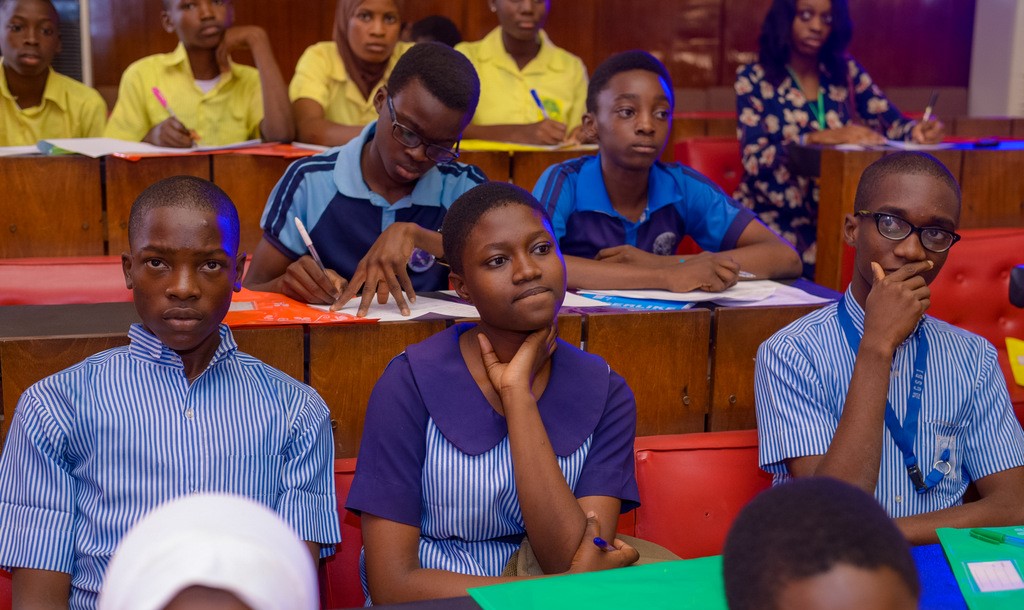
Committing to change
The representative of the Oyo state Commissioner for Education declared that the state currently had the highest number of out-of-school children in South-West Nigeria. There is now a renewed interest by the government of Oyo state to increase school enrolment, retention and completion. He affirmed that the Ministry, would intensify efforts to reach students who had dropped out of school and get them back into education. My team is currently working with the Ministry to get the out-of-school adolescents back to school.
Ensuring senior secondary school retention is a big task, but we believe that we have contributed to ongoing efforts of the Oyo state government to tackle school drop-outs, and we hope to soon see new interventions to encourage retention, with the primary focus on counselling services for adolescents. We believe staying in school will enable adolescents to make better health-related decisions, to improve health in this age group.
Gown and Town documentary on Youtube
View and download PDF Gown and Town Project Brief [PDF,2.5MB]
Find out more about the project and watch the documentary on the SAYPHIN website
View and download PDFs Students Brief [PDF,500KB], Teachers Brief [PDF,600KB], Parents and Guardians Brief [PDF,400KB], Community Members Brief [PDF,700KB], School Owners Brief [PDF,800KB].
Photography by Hstyle Pictures, Ibadan, Nigeria
This report is part of the DELTAS Africa CPE Seed Fund Programme Hub
This work is licensed under a Creative Commons Attribution 4.0 International License


Please Sign in (or Register) to view further.